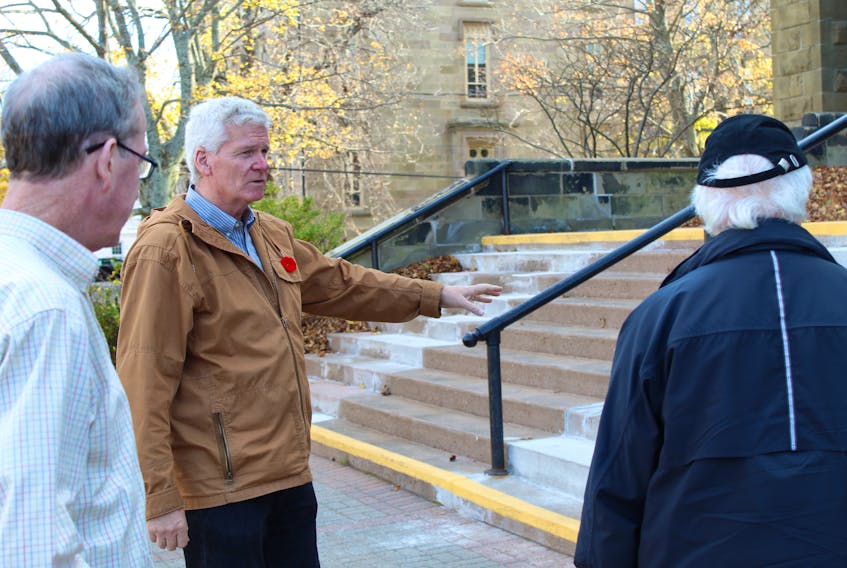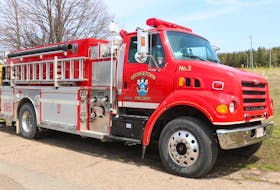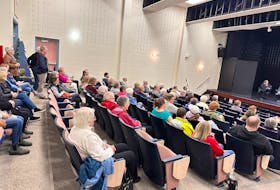CHARLOTTETOWN, P.E.I. — Don Lott doesn’t just walk past a building.
“When you’re walking down the sidewalks here in Charlottetown, you sort of have to step back and look up.”
The Charlottetown tour guide gave a brief presentation to a group of about 15 people on the intricacies and oddities of downtown Charlottetown’s historic buildings - all from the comfort of the great indoors.
The Armchair Tour took place at the Confederation Centre Public Library on Nov. 2. It was part of the library’s Step Back in Time lecture series.
Lott, who has 30 years of experience working with Parks Canada, started his tour with the building it took place in. The library was built in 1964, but it’s in the process of moving to the next-door Dominion Building, which was built in 1956.
“So, we’re actually moving into an older building.”
Next, armchair tourists explored Victoria Row. Lott explained how the building’s facades were built using high quality imported bricks, while the sides and backs of them used bricks made on P.E.I.
This is because Island bricks were made with softer, lesser quality sandstone. That being said, the comparatively low amount of manufacturing and air pollution throughout Charlottetown’s history has helped its buildings’ bricks last longer, Lott said.
Nearby stands the Hon. George Coles Building. Back in the day, its clock used to be illuminated by gas jet burners, which Islanders would travel from across the province to see.
Moving down Great George Street, the Customs House used to be a bank. Whenever farmers visited, they’d have to do their dealings through a window on the King Street side of the building so not to make a mess of the inside with their muddy boots, Lott said.
“It was the first Island banking window.”
Lott spent a major portion of the tour walking through St. Dunstan’s Basilica. The current building was started in 1913 and completed in 1919, and the city has a bylaw that ensures it’s always visible on the skyline.
“No building can be higher than the Charlottetown spires.”
During its construction, a circular stain glass window was ordered from Munich, Germany to place over the sanctuary at the front of the minor basilica. However, architects figured the deal was off after 1914 when the First World War began.
But a year after the war ended, they were informed the deal was still on and the window as shipped over, Lott said.
Down near Peakes Wharf, there’s a section of sidewalk replaced by crude stone slabs. Lott said these slabs were usually intended to be cut into smaller, cleaner sidewalk pieces.
“Well somebody didn’t get the memo and they buried them in the ground.”
On Water Street, the Customs Bonded Warehouse used to be where medicinal alcohol was stored during the Prohibition. Apparently, employees would pour alcohol down the street every Monday, while bystanders watched in despair as it went to waste, Lott said.
Finally, Lott brought the group back up to City Hall on Queen Street Built in 1888, it used to house many of the city’s municipal services, including the fire hall.
Notably, the tower has hook along its sides, which fire fighters would use to hang their fire houses over to dry. The fire bell, dubbed Big Donald after a former fire chief, is displayed nearby at the current fire hall on Kent Street.
Noted throughout his tour were the many fires which affected these historical buildings. Lott also shared bits of trivia, such as a cannon at a downtown intersection, a tuna made of spoons, and a building with the house address 100½.









